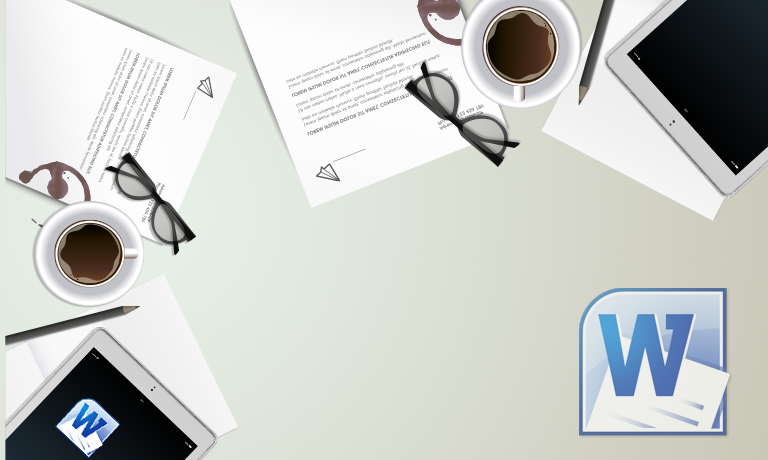Instructors
Microsoft Office Word 2016: Part 2
Course Length: 1 day
Course Description
Overview:
After you master the basics of using Microsoft® Word 2016 such as creating, editing, and saving documents; navigating through a document; and printing, you’re ready to move on to tackling the more advanced features. These features enable you to create complex and professional documents with a consistent look and feel. They also enable you to automate tedious tasks such as preparing a letter to send to every customer of your organization.
Creating professional-looking documents can help you give your organization a competitive edge. Implementing time-saving features such as document templates and automated mailings helps your organization reduce expenses. Mastering these techniques will make you a valued employee in your organization.
This course covers Microsoft Office Specialist exam objectives to help students prepare for the Word 2016 Exam and the Word 2016 Expert Exam.
Course Objectives:
In this course, you will learn to create and modify complex documents and use tools that allow you to customize those documents.
You will:
- Organize content using tables and charts.
- Customize formats using styles and themes.
- Insert content using quick parts.
- Use templates to automate document formatting.
- Control the flow of a document.
- Simplify and manage long documents.
- Use mail merge to create letters, envelopes, and labels.
Target Student:
This course is designed for students who wish to use Microsoft Word to create and modify complex documents and use tools that allow them to customize those documents.
Prerequisites:
To ensure your success in this course, you should have end-user skills with any current version of Windows®, including being able to start programs, switch between programs, locate saved files, close programs, and access websites using a web browser. In addition, you should be able to navigate and perform common tasks in Word, such as opening, viewing, editing, and saving documents; formatting text and paragraphs; format the overall appearance of a page; and create lists and tables. To meet these prerequisites, you can take any one or more of the following Logical Operations courses:
- Microsoft® Office Word 2016: Part 1
- Using Microsoft® Windows® 10 or Microsoft® Windows® 10: Transition from Windows® 7
Course-specific Technical Requirements
Hardware
For this course, you will need one computer for each student and one for the instructor. Each computer will need the following minimum hardware configurations:
- 1 GHz or faster 32-bit or 64-bit processor
- 1 gigabyte (GB) RAM (32-bit) or 2 GB RAM (64-bit)
- 25 GB available disk space
- DirectX 10 graphics card and a 1,024 × 576 or higher resolution monitor (1,024 × 768 resolution or higher monitor recommended)
- Keyboard and mouse (or other pointing device)
- Network cards and cabling for local network access
- Internet access (contact your local network administrator)
- Printer (optional) or an installed printer driver
- Projection system to display the instructor’s computer screen
Software
- Microsoft® Office Professional Plus 2016
- Microsoft® Windows® 10 Professional or Enterprise
Although it may be possible to deliver course content by using Microsoft Office Word 2016 on a Windows 7/8/8.1 installation, this course was written and tested on Windows 10 Pro. If you plan to teach this course using a different version of Windows, you should key through the course completely to note what will be different before you deliver the course to students.
Course Content
Lesson 1: Organizing Content Using Tables and Charts
Topic A: Sort Table Data
Topic B: Control Cell Layout
Topic C: Perform Calculations in a Table
Topic D: Create a Chart
Topic E: Add an Excel Table to a Word Document (Optional)
Lesson 2: Customizing Formats Using Styles and Themes
Topic A: Create and Modify Text Styles
Topic B: Create Custom List or Table Styles
Topic C: Apply Document Themes
Lesson 3: Inserting Content Using Quick Parts
Topic A: Insert Building Blocks
Topic B: Create and Modify Building Blocks
Topic C: Insert Fields Using Quick Parts
Lesson 4: Using Templates to Automate Document Formatting
Topic A: Create a Document Using a Template
Topic B: Create and Modify a Template
Topic C: Manage Templates with the Template Organizer
Lesson 5: Controlling the Flow of a Document
Topic A: Control Paragraph Flow
Topic B: Insert Section Breaks
Topic C: Insert Columns
Topic D: Link Text Boxes to Control Text Flow
Lesson 6: Simplifying and Managing Long Documents
Topic A: Insert Blank and Cover Pages
Topic B: Insert an Index
Topic C: Insert a Table of Contents
Topic D: Insert an Ancillary Table
Topic E: Manage Outlines
Topic F: Create a Master Document
Lesson 7: Using Mail Merge to Create Letters, Envelopes, and Labels
Topic A: The Mail Merge Feature
Topic B: Merge Envelopes and Labels
Appendix A: Microsoft Office Word 2016 Exam 77-725
Appendix B: Microsoft Office Word 2016 Expert Exam 77-726
Appendix C: Microsoft Word 2016 Common Keyboard Shortcuts
Course Reviews
No Reviews found for this course.

